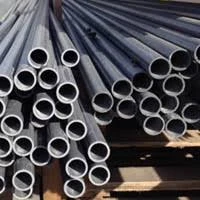
-
 Afrikaans
Afrikaans -
 Albanian
Albanian -
 Amharic
Amharic -
 Arabic
Arabic -
 Armenian
Armenian -
 Azerbaijani
Azerbaijani -
 Basque
Basque -
 Belarusian
Belarusian -
 Bengali
Bengali -
 Bosnian
Bosnian -
 Bulgarian
Bulgarian -
 Catalan
Catalan -
 Cebuano
Cebuano -
 China
China -
 China (Taiwan)
China (Taiwan) -
 Corsican
Corsican -
 Croatian
Croatian -
 Czech
Czech -
 Danish
Danish -
 Dutch
Dutch -
 English
English -
 Esperanto
Esperanto -
 Estonian
Estonian -
 Finnish
Finnish -
 French
French -
 Frisian
Frisian -
 Galician
Galician -
 Georgian
Georgian -
 German
German -
 Greek
Greek -
 Gujarati
Gujarati -
 Haitian Creole
Haitian Creole -
 hausa
hausa -
 hawaiian
hawaiian -
 Hebrew
Hebrew -
 Hindi
Hindi -
 Miao
Miao -
 Hungarian
Hungarian -
 Icelandic
Icelandic -
 igbo
igbo -
 Indonesian
Indonesian -
 irish
irish -
 Italian
Italian -
 Japanese
Japanese -
 Javanese
Javanese -
 Kannada
Kannada -
 kazakh
kazakh -
 Khmer
Khmer -
 Rwandese
Rwandese -
 Korean
Korean -
 Kurdish
Kurdish -
 Kyrgyz
Kyrgyz -
 Lao
Lao -
 Latin
Latin -
 Latvian
Latvian -
 Lithuanian
Lithuanian -
 Luxembourgish
Luxembourgish -
 Macedonian
Macedonian -
 Malgashi
Malgashi -
 Malay
Malay -
 Malayalam
Malayalam -
 Maltese
Maltese -
 Maori
Maori -
 Marathi
Marathi -
 Mongolian
Mongolian -
 Myanmar
Myanmar -
 Nepali
Nepali -
 Norwegian
Norwegian -
 Norwegian
Norwegian -
 Occitan
Occitan -
 Pashto
Pashto -
 Persian
Persian -
 Polish
Polish -
 Portuguese
Portuguese -
 Punjabi
Punjabi -
 Romanian
Romanian -
 Russian
Russian -
 Samoan
Samoan -
 Scottish Gaelic
Scottish Gaelic -
 Serbian
Serbian -
 Sesotho
Sesotho -
 Shona
Shona -
 Sindhi
Sindhi -
 Sinhala
Sinhala -
 Slovak
Slovak -
 Slovenian
Slovenian -
 Somali
Somali -
 Spanish
Spanish -
 Sundanese
Sundanese -
 Swahili
Swahili -
 Swedish
Swedish -
 Tagalog
Tagalog -
 Tajik
Tajik -
 Tamil
Tamil -
 Tatar
Tatar -
 Telugu
Telugu -
 Thai
Thai -
 Turkish
Turkish -
 Turkmen
Turkmen -
 Ukrainian
Ukrainian -
 Urdu
Urdu -
 Uighur
Uighur -
 Uzbek
Uzbek -
 Vietnamese
Vietnamese -
 Welsh
Welsh -
 Bantu
Bantu -
 Yiddish
Yiddish -
 Yoruba
Yoruba -
 Zulu
Zulu
Exploring the Benefits and Applications of FRP Dampers in Structural Engineering
Understanding FRP Dampers A Modern Solution for Structural Resilience
Fiber Reinforced Polymer (FRP) dampers are innovative devices designed to enhance the structural integrity and resilience of buildings and bridges against dynamic loads, such as those caused by earthquakes or high winds. As engineering technologies evolve, FRP dampers have emerged as a viable solution, offering numerous advantages over traditional damping systems.
The Mechanism Behind FRP Dampers
FRP dampers utilize composite materials made from polymer resin reinforced with fibers (typically glass, carbon, or aramid). This integration results in a lightweight yet incredibly strong material that can absorb and dissipate energy efficiently. The primary function of these dampers is to mitigate vibrations and movements within structures, thereby preventing damage during extreme events.
The operational principle of FRP dampers involves converting kinetic energy generated by dynamic loads into heat energy through viscoelastic damping. This process is essential in maintaining the stability of structures during seismic activities or strong winds. By effectively managing these forces, FRP dampers contribute significantly to the longevity and safety of buildings and infrastructure.
Advantages of FRP Dampers
One of the most significant advantages of FRP dampers is their lightweight nature. Compared to traditional steel dampers, FRP dampers can reduce the overall weight of a structure, leading to lower foundation costs and simpler construction methods. The reduced weight is particularly beneficial in high-rise buildings, where every kilogram saved in materials can result in substantial economic and structural benefits.
frp damper

Moreover, FRP materials are highly resistant to corrosion, making them suitable for various environmental conditions. This resistance not only extends the lifespan of these dampers but also reduces maintenance costs and the frequency of repairs. In coastal or industrial areas where exposure to harsh chemicals and moisture is common, the durability of FRP dampers offers a significant advantage.
Another notable feature of FRP dampers is their design flexibility. Engineers can tailor the properties of these materials to suit specific project requirements, ensuring optimal performance for different applications. This adaptability allows for innovative solutions in unique architectural designs while maintaining the essential functions of energy dissipation and vibration reduction.
Applications of FRP Dampers
FRP dampers are employed in a wide range of applications, from residential buildings to large-scale infrastructure projects. In seismic-prone regions, such as parts of the United States, Japan, and Italy, integrating FRP dampers into building designs has become crucial for reducing earthquake-induced damage.
In bridge construction, FRP dampers help manage vibrations from traffic and environmental forces. By incorporating these dampers, engineers can enhance the structural integrity and lifespan of bridges, ensuring safe and efficient transportation for years to come. Additionally, the use of FRP dampers in retrofitting existing structures provides a cost-effective means to improve resilience against seismic forces without requiring extensive renovations.
Conclusion
As urbanization continues to rise and climate challenges become more pronounced, the need for resilient structures is more critical than ever. FRP dampers present a modern solution that combines strength, durability, and flexibility, providing an effective way to protect infrastructure from dynamic forces. Their widespread application and potential for innovation make them a vital component in the evolution of engineering practices designed to enhance public safety and asset longevity. As the field of structural engineering advances, FRP dampers are poised to play an increasingly prominent role in creating a safer and more resilient built environment.









